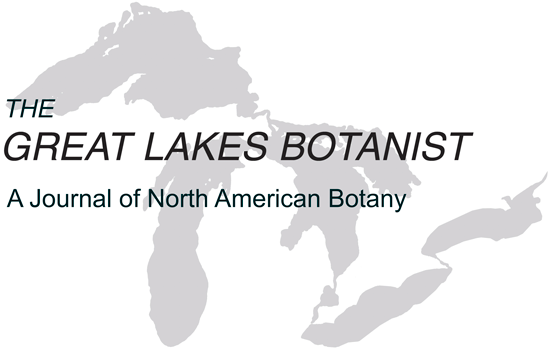ï~~1999
THE MICHIGAN BOTANIST
27
rhizomes reported for any species of Michigan Aster. In late fall A. firmus rhizome tips generally form a leafy photosynthetic rosette at some distance from
the "parent" shoot. Late season rosettes are also formed in A. puniceus, but due
to the absence of rhizomes, they are always found at the immediate base of the
current year's shoot.
This important difference deserves emphasis because it likely influences other
morphological traits, including two of our variables, stem thickness and number
of shoots at the base of a plant. Although we did not measure stored energy, we
predict the type of perennating below-ground structure influences the thickness of
a shoot as well as the number of shoots arising at a given point. For instance,
while the extended rhizome of Aster firmus generally supports only one slender
shoot, the stout caudex of A. puniceus can support multiple and larger shoots.
These contrasting below-ground structures also give rise to significant ecological differences. Each shoot of Aster firmus produces 2-6 new vegetative
shoots each generation via extended rhizomes. This means of reproduction allows A. firmus to increase in abundance and spread across a suitable habitat during a relatively short time period, even occasionally spreading into drier upland
soils. The ability to expand clonally may be a primary reason why A. firmus can
achieve much higher relative abundance than A. puniceus, to the point of being
the dominant forb species in some herbaceous wetland communities (Jones
1980b, 1989; Shinners 1946; Voss 1996; Warners 1997).
By contrast, A. puniceus populations are generally comprised of a few distinct
individuals, each of which may consist of several shoots, always found in wet,
organic soils. While these clumps will slowly increase in size, the increase is
very slow and each clump remains stationary, occupying the same immediate location throughout its lifetime. The lower relative abundance of A. puniceus compared with A. firmus, as well as its more restricted habitat requirements, are
likely related to its limited ability to disperse via vegetative propagation.
Specimens from MICH demonstrate that below-ground material is often neglected when collecting these plants. The rhizomes of Aster firmus are particularly difficult to remove from the dense sedge meadow root mat in which they
typically grow. Since most taxonomic work relies heavily on herbarium specimens, it is not surprising that below-ground structures of these plants have
largely been overlooked, and to our knowledge never before quantified.
Other above ground characteristics also help to separate these two asters. Several authors have commented on the more compact, leafy capitulescence of Aster
firmus and the more open, less leafy capitulescence of A. puniceus (Jones 1980b,
1989; Shinners 1941; Wiegand 1924). Our variable, mean BRC, is the first quantitative description of these contrasting capitulescence architectures. The combinations of a long rhizome with a compact capitulescence in A. firmus and a short
caudex with an open, lax capitulescence in A. puniceus is striking and indicates
these two characters likely have a different genetic basis (Brouillet, personal
communication).
An infrequently cited character, leaf midvein pubescence (but see Voss 1996),
also consistently separates the two species. Stem pubescence is a commonly
cited character in comparing these two asters, but many authors have noted how
variable this trait can be. We concur that stem pubescence in these taxa is vari
0


